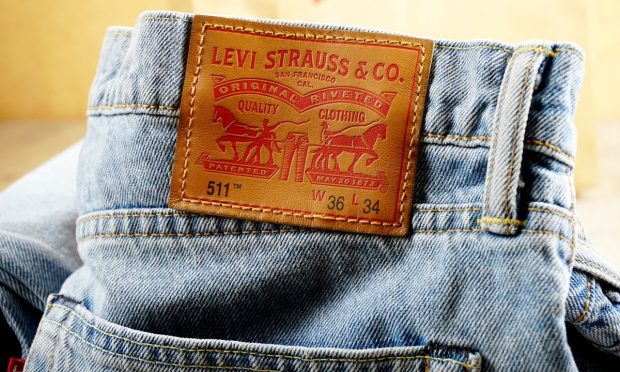Levi’s Says Casual Trend, Baggy Jeans, Larger Waistlines Driving Denim Demand

Despite the ongoing disruptions of the pandemic, global supply chain constraints and inflation running at a 40-year high, Levi Strauss & Co. — the world’s largest retailer of denim and related apparel — said Wednesday (Jan. 26) that 2021 will be remembered for another reason: the year the San Francisco-based company delivered its highest revenue and profitability in over two decades.
In speaking to analysts and investors after posting its Q4 and full-year earnings results for the three months ended Nov. 28, Levi’s CEO Chip Bergh said the company was comfortable raising its full-year revenue guidance for 2022, in part because the ongoing run of denim was set to continue.
“I think there’s every reason to be optimistic about denim and denim category growth as we go forward,” Bergh said on the company’s conference call, citing “three big things” that support that belief.
First is the “continued acceleration of the casualization trend,” he said, not just in the U.S. but all over the world. There’s also the fact that Levi’s is in “the early innings of a new denim cycle,” which Bergh described as “looser, baggier fits” for both men and women — versus the prior skinny jean cycle that appealed to only half its customer base.
And finally, Bergh said, there’s the fact that nearly 40% of Americans’ pants don’t fit anymore, due to pandemic-era weight gain that has stoked the need for a mass “closet upgrade or refresh.”
“As the global denim market leader, we are well positioned to take advantage of, and drive, growth,” Bergh said, after listing the company’s 2022 sales growth guidance from mid-single digits to 11% to 13%. “We have [also] achieved significant traction engaging Gen Z consumers through programs like reBuy secondhand recommerce initiatives,” he added in reference to what Levi’s calls its more highly penetrated total digital ecosystem.
Watching Customers Like a Hawk
The fact that Levi’s results and webcast occurred only a few hours after the Federal Reserve gave its latest update on interest rates and inflation was not lost on Bergh, who has run the denim retailer for a decade following a 20-year run at Procter & Gamble and a stint in the Army.
“Inflation is partially psychological. I’ve been there. I was in business back in the early ’80s and I remember it,” Bergh said. “We’re watching the consumer like a hawk, but right now every signal that we’re seeing is positive.”
For example, he said, the fact that Levi’s has been able to leverage its strong brand equity and pricing power to implement 7% average price increases that are sticking — with plans for additional hikes this year — has helped the retailer offset inflationary pressures.
“We’ve been successful getting pricing passed through over the last six months,” he said, “but we’ll keep an eye on it and if we see the signals starting to change, we’ll react quickly.”
In the meantime, the Levi’s leadership team said considering that economists’ reports are very optimistic about the consumer, “that’s why we’re feeling pretty good and everything we’re seeing suggests that will continue,” Bergh said.
Beyond Denim
Although Levi’s official Q4 results ended in November with revenue up 22% versus last year and 7% above 2019 levels, CFO Harmit Singh told investors that the holiday momentum extended through December. Despite the earlier than usual start of holiday shopping and COVID related impacts, Singh said both months saw results above expectations, reflecting strength in both D2C and wholesale channels.
In addition to building two new distribution centers, Levi’s is also planning to open 100 new format omnichannel stores, Bergh said, so that consumers can shop these physical points seamlessly, and feel the ease and convenience of Levi’s complete offering — including the recently acquired Beyond Yoga brand the revamped Dockers line — across all channels.
“As good as this past year has been, I am confident the future will be even better,” Bergh concluded.
